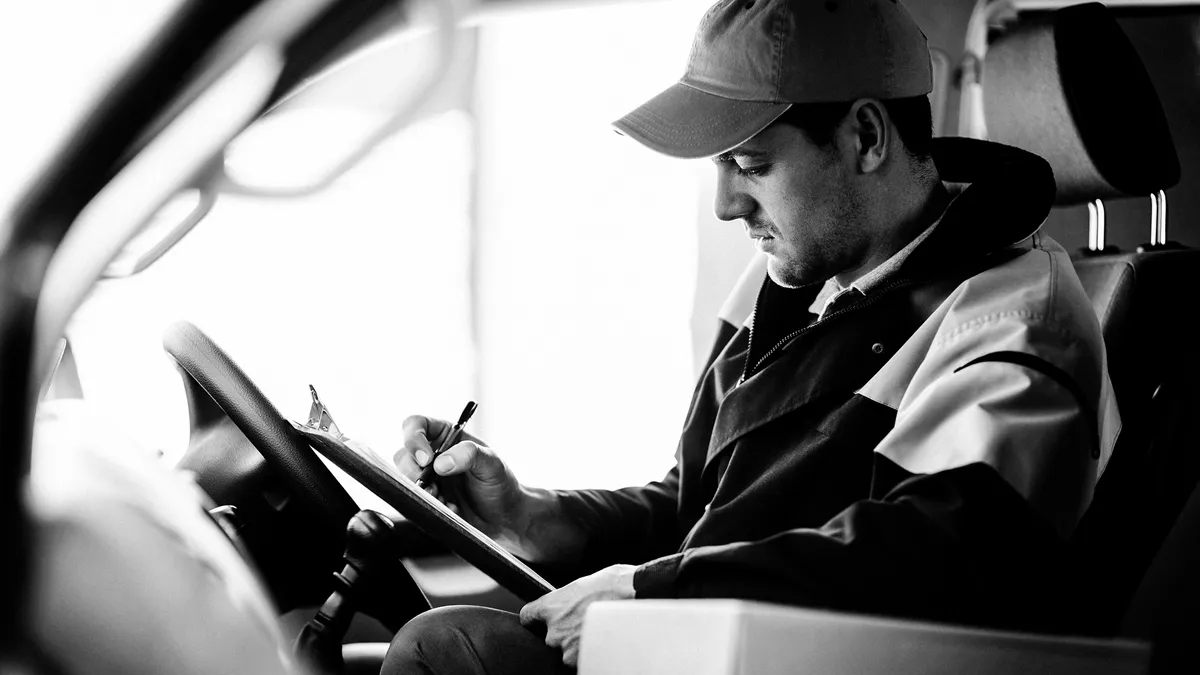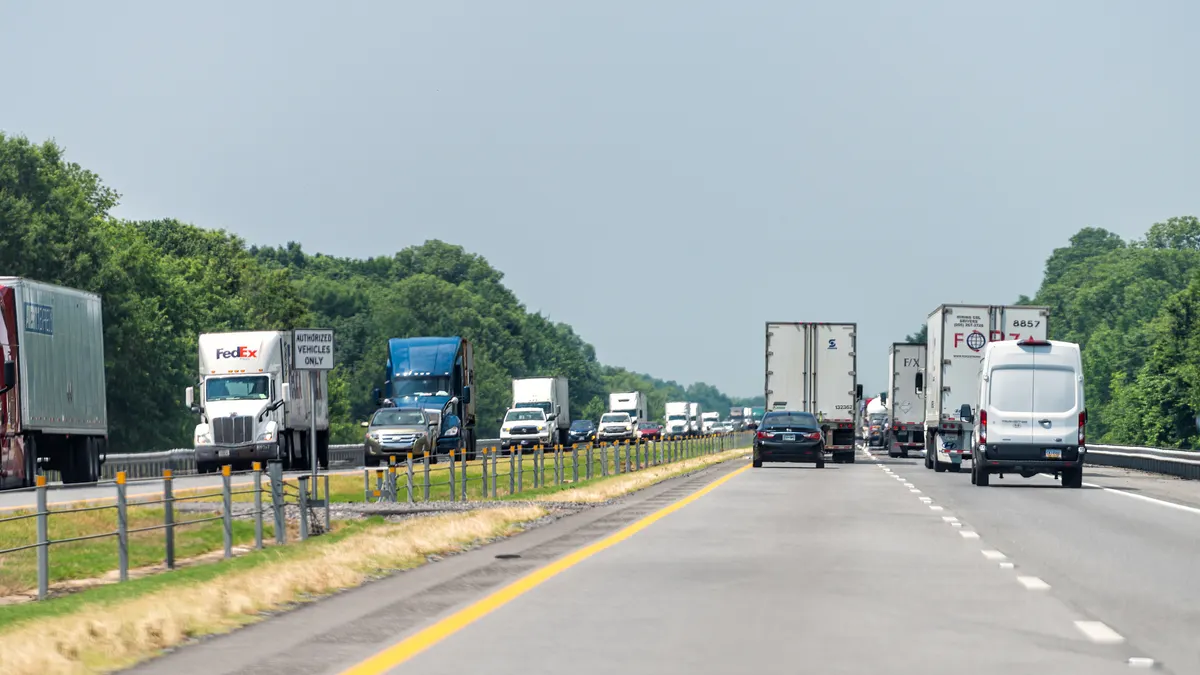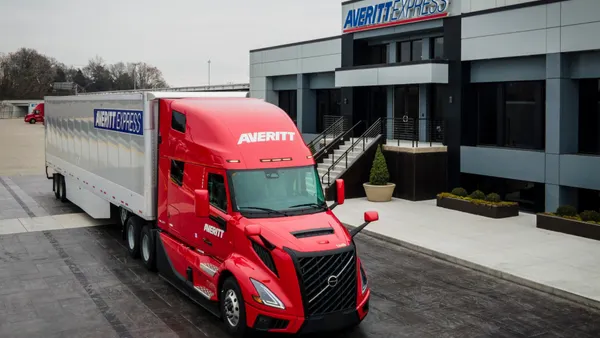Dive Brief:
- The issues that concern drivers, including pay, remain fleet officials' top issues, even during the pandemic, Keith Wilson, director of safety and recruiting for Sharp Transport, said during a webinar Wednesday. While fleet officials are addressing virus mitigation, the C-suite is focused on driver shortages, driver retention and possible shortage solutions, such as lowering the minimum age to drive a Class 8 truck on the interstate from 21 to 18.
- Trucking has historically made changes and followed business trends, but usually after other industries, making it a secondary trend adopter, said Max Farrell, CEO and co-founder of WorkHound, a software company that allows employees to make anonymous feedback. The COVID-19 pandemic has made it possible for trucking to be a leader, not a "laggard," in workplace innovation and improvements.
- Some innovations, such as in-cab cameras, are controversial with some drivers, Wilson said, but his company worked to address concerns and was able to reduce accidents by 125% after in-cab camera use. Wilson and Farrell were part of a webinar panel on the future of fleet operations, hosted on Wednesday by Heavy Duty Trucking, WorkHound and Vector.
Dive Insight:
Brian Belcher, COO and co-founder of Vector, noted that driver issues were the top concerns of transport executives and drivers, pointing to the 2019 survey by the American Transportation Research Institute (ATRI). The webinar panelists agreed the pandemic has done little to change the general focus and concerns of executives and drivers, which include shortages and retention.
In October, ATRI found the driver shortage was the top concern of executives and drivers. HOS ranked second, driver compensation ranked third, driver delays or detention at loading facilities ranked fourth, and truck parking ranked fifth.
And pay is still a big issue. Farrell said that driver pay is one of the most complex issues that exist between fleets and drivers. At the root of the problem is the method for calculating driver pay.
Sometimes problems are the fault of fleets, because recruiters stretch the truth when pitching fleets to recruits. Wilson told the panel he does not allow puffery, and that he lets new drivers know during orientation that he will tell them the same things about the company that they were pitched by the recruiter.
Wilson also explained how the company kept aware of driver sentiments on another issue: In-cab cameras. The cameras that face the driver are growing in use, Wilson said, but drivers are wary of them.
After an internal management debate, Sharp Transport was careful to gather input from drivers, who the company thought might object. Some drivers, it turns out, worried the cameras stayed on after-hours, and would record drivers as they slept or relaxed in the back. Wilson and management assured drivers the in-cab cameras turn off when the key is taken from the ignition. Out of 150 Sharp Transport drivers, only three left the company after in-cab cameras were installed. Accidents dropped 125% over time after installation.
"That paid for the cameras," said Wilson.
During the pandemic, open communication with drivers has been even more paramount. The virus has led drivers to ask about ways to avoid infection, Farrell said, including safer ways to interact with customers and cut down on passing papers from person to person. Fleets should double down on feedback, he said.
"It's all about keeping your best people," said Farrell. He said fleets need to commit to continuous feedback, good pay and enough home time.









